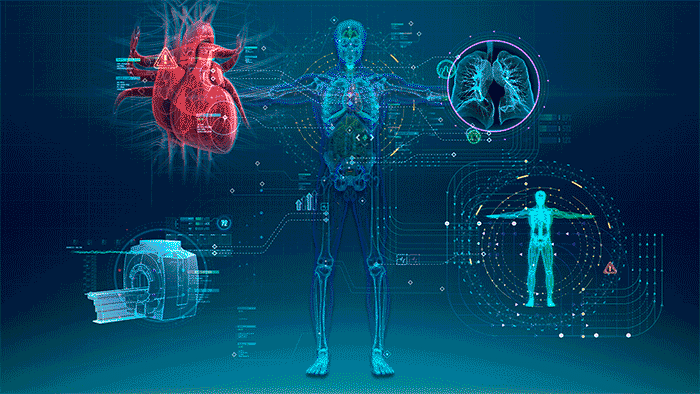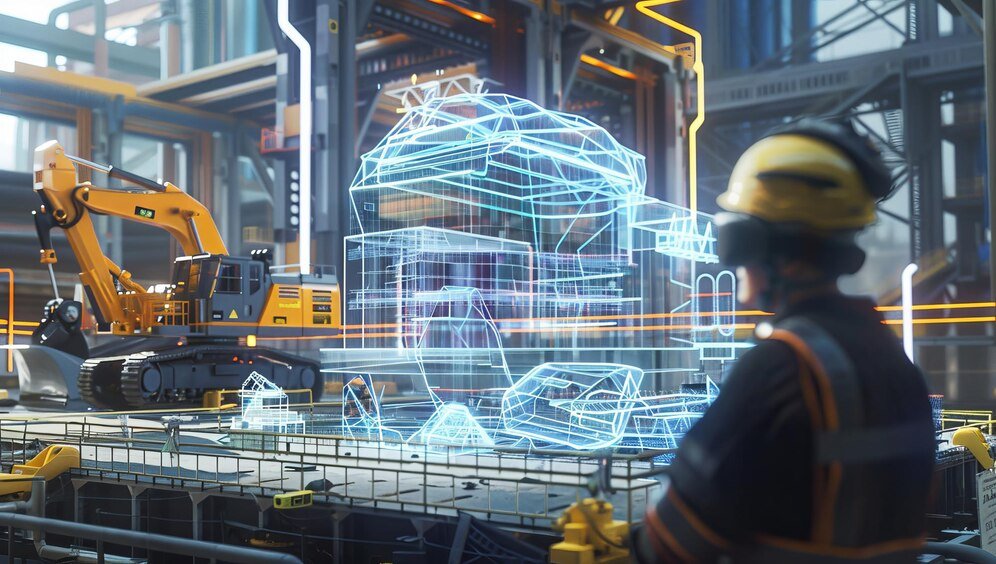The landscape of technology is undergoing an unprecedented transformation, driven by the relentless advancement of Artificial Intelligence. Beyond its applications in data analysis and automation, AI is now profoundly influencing the very bedrock of digital infrastructure: system design. AI-driven system designs are emerging as the next frontier, promising to revolutionize how complex software and hardware architectures are conceived, optimized, and maintained. This involves leveraging AI not just as a component within a system, but as an intelligent force that shapes the system itself, from its foundational blueprints to its ongoing operational adjustments. This profound shift promises unparalleled levels of efficiency, resilience, and adaptability, truly unveiling a new era in the creation of intelligent systems.
The Evolution of System Design: A Historical Context
To fully appreciate the groundbreaking nature of AI-driven system design, it’s crucial to understand the historical evolution of how complex systems have been crafted and managed, from manual processes to today’s sophisticated automated approaches.
A. Traditional Human-Centric Design Paradigms
For decades, system design remained largely a human-centric discipline. Highly skilled architects and engineers, armed with their knowledge, experience, and often intuition, manually crafted system blueprints. This process, while effective for simpler systems, presented significant challenges as complexity escalated.
- Manual Design and Specification: System architects would typically use diagrams (like UML, architectural patterns), written specifications, and extensive documentation to define system components, their interactions, and data flows. This manual creation was time-consuming and prone to human interpretation errors.
- Limited Scalability of Design Efforts: The number of design permutations and the sheer volume of considerations (performance, security, cost, reliability) quickly overwhelmed human capacity. Designing for massive scale or highly dynamic environments became incredibly challenging, often leading to over-simplified or sub-optimal solutions.
- Heuristic-Based Optimization: Performance tuning, resource allocation, and failure recovery strategies were often based on established heuristics, past experiences, and trial-and-error. This reactive approach could be slow, inefficient, and often failed to uncover truly optimal configurations or anticipate novel failure modes.
- Static and Rigid Architectures: Designs tended to be static and difficult to adapt quickly to changing requirements or unpredictable workloads. Modifying a fundamental architectural decision often meant a costly and time-consuming redesign, leading to slow innovation cycles.
- Knowledge Silos and Expertise Dependence: The quality of design was heavily reliant on the individual expertise of a few senior architects. This created knowledge silos and made it difficult to scale design capabilities across an organization, hindering wider adoption of best practices.
B. The Advent of Automated Design Aids
The first wave of automation in system design came with the introduction of tools that aided human designers, rather than replacing them. These tools focused on specific aspects of the design process.
- Computer-Aided Design (CAD) for Physical Systems: In hardware and physical infrastructure, CAD tools allowed designers to create, modify, analyze, and optimize designs digitally, improving precision and accelerating prototyping.
- Simulation and Modeling Tools: Software tools emerged that allowed architects to simulate system behavior under various loads or failure scenarios, helping to predict performance and identify bottlenecks before deployment.
- Infrastructure as Code (IaC): While not a design tool in itself, IaC (e.g., Terraform, CloudFormation) brought automation to infrastructure provisioning, allowing designers to express infrastructure as code, leading to more consistent deployments based on their blueprints.
- Automated Testing and CI/CD: Continuous Integration/Continuous Deployment (CI/CD) pipelines automated the build, test, and deployment phases, but the initial system design and underlying architectural decisions still remained largely a human domain.
Despite these advancements, the core creative and strategic decisions in system design remained firmly in human hands. The challenge persisted: how to design systems that are not just built automatically, but designed intelligently, learning from vast datasets and adapting to dynamic conditions. This is where AI-driven system design steps in.
Core Principles of AI-Driven System Design
AI-driven system design is fundamentally about embedding intelligence into the design process itself, enabling systems to become self-optimizing and adaptive from conception. This relies on several key principles.
A. Data-Driven Insights and Analytics
At its heart, AI-driven design is powered by data-driven insights. Instead of relying solely on human intuition, AI systems ingest massive amounts of operational data (e.g., performance metrics, logs, resource utilization, network traffic, security incidents, cost data) from existing systems. Through advanced analytics, machine learning algorithms can:
- Identify Patterns and Anomalies: Uncover hidden correlations, performance bottlenecks, and resource wastage that are imperceptible to human analysis.
- Predict Future Behavior: Forecast future demand, potential failures, or optimal resource needs based on historical data, enabling proactive design choices.
- Quantify Trade-offs: Provide objective data to evaluate trade-offs between different design choices (e.g., cost vs. performance, security vs. latency).
B. Algorithmic Optimization and Generation
AI moves beyond mere analysis to actively optimize and even generate design permutations. This is often achieved through various AI techniques:
- Reinforcement Learning (RL): An AI agent learns to make a sequence of decisions (e.g., resource allocation, network topology changes) to maximize a reward signal (e.g., minimize cost, maximize throughput) in a simulated or real environment.
- Generative AI (e.g., LLMs for code/config): Large Language Models can assist in generating configuration files (e.g., Terraform, Kubernetes YAML), network policies, or even code snippets based on high-level design requirements, significantly accelerating implementation.
- Evolutionary Algorithms/Genetic Algorithms: These algorithms mimic natural selection to explore a vast design space, iteratively evolving better solutions based on fitness functions (performance metrics, cost functions), effectively discovering novel and highly optimized architectures.
- Constraint Satisfaction Problems (CSPs): AI can be used to solve complex design problems with numerous constraints (e.g., “allocate these microservices to servers while minimizing latency, ensuring security zones, and staying within budget”), finding feasible and optimal solutions.
C. Adaptive and Self-Healing Architectures
A key aspiration of AI-driven design is to move towards adaptive and self-healing architectures. Instead of fixed designs, systems can dynamically adjust their configurations, resource allocations, and even architectural patterns in response to real-time operational data.
- Dynamic Scaling: AI can go beyond simple threshold-based auto-scaling, predicting future load and preemptively scaling resources, or even dynamically choosing the most cost-effective instance types based on real-time market prices.
- Automated Anomaly Detection and Remediation: AI models continuously monitor system behavior, detect deviations from normal patterns (anomalies), and automatically trigger predefined remediation actions or suggest optimal solutions to human operators, enhancing resilience.
- Self-Optimization: AI agents can continuously learn and fine-tune system parameters (e.g., database connection pools, network buffer sizes, microservice timeout values) to maintain optimal performance and resource utilization under fluctuating conditions.
D. Predictive Analytics for Proactive Design
AI allows for a shift from reactive problem-solving to proactive design and prevention. By analyzing historical data and identifying leading indicators, AI can predict potential issues (e.g., resource exhaustion, security vulnerabilities, performance degradations) before they occur. This enables architects to:
- Design for Anticipated Bottlenecks: Incorporate redundancy or alternative pathways in the design where AI predicts future bottlenecks.
- Pre-empt Security Risks: Identify patterns indicative of potential attacks and recommend stronger security controls in the design phase.
- Optimize Resource Allocation: Provision resources in anticipation of demand surges, rather than reacting after they happen, ensuring smooth operation.
E. Human-in-the-Loop Collaboration
While AI is powerful, human-in-the-loop collaboration remains essential. AI-driven design is not about fully automating away human architects, but augmenting their capabilities. AI can:
- Generate Design Options: Present multiple optimized design alternatives with their associated trade-offs (cost, performance, risk) for human review and selection.
- Provide Intelligent Recommendations: Offer data-backed suggestions for improvements or solutions to design challenges.
- Flag Potential Issues: Alert human designers to overlooked constraints, potential conflicts, or sub-optimal choices in their manual designs.
- Explain Decisions: For critical systems, explainable AI (XAI) is vital for understanding why the AI made a particular design recommendation, building trust and allowing human oversight.
This collaborative model leverages the strengths of both AI’s analytical power and human intuition, creativity, and strategic oversight.
Key Applications and Use Cases of AI-Driven System Design
AI is being applied across various facets of system design, from low-level infrastructure optimization to high-level architectural decision-making.
A. Automated Cloud Infrastructure Optimization
One of the most immediate and impactful applications is in cloud infrastructure optimization. Cloud environments are highly dynamic, with complex pricing models and constantly changing workloads. AI can:
- Intelligent Resource Provisioning: Dynamically select optimal VM instances, storage tiers, and database configurations based on real-time and predicted workload patterns, significantly reducing cloud spend.
- Network Topology Design: Optimize network routes, firewall rules, and VPC peering connections for latency, throughput, and cost.
- Cost Anomaly Detection: Monitor cloud billing data for unusual spikes or patterns, flagging potential misconfigurations or inefficiencies.
- Auto-Scaling Beyond Thresholds: Use predictive models to scale resources up or down not just on immediate load, but on forecasted demand, preventing both over-provisioning and capacity shortages.
B. Microservices and Distributed System Orchestration
Designing and managing complex microservices architectures is a prime candidate for AI intervention. The sheer number of services, their interdependencies, and dynamic scaling create an immense management challenge. AI can help with:
- Service Placement Optimization: Intelligently place microservices on nodes to optimize for resource utilization, network latency, or fault tolerance.
- Automated Canary Deployments and Rollbacks: Monitor new deployments with AI, automatically detecting performance regressions or errors and initiating rollbacks if necessary, minimizing user impact.
- Dynamic Traffic Routing: Smartly route API requests to different service versions or regions based on performance, latency, or current load.
- Dependency Mapping and Anomaly Detection: Automatically discover and map complex service dependencies, and detect unusual communication patterns that might indicate a problem.
C. Database and Data Architecture Optimization
Databases are often the bottleneck in complex systems. AI can provide significant value in database and data architecture design:
- Schema Optimization: Analyze query patterns and suggest optimal indexing strategies, partitioning schemes, or even schema changes for improved performance.
- Automated Query Tuning: Continuously monitor database queries and suggest or automatically apply optimizations to slow-running queries.
- Storage Tiering and Life-cycling: Automatically move data between different storage tiers (e.g., hot, warm, cold) based on access patterns, optimizing storage costs and retrieval times.
- Data Replication and Consistency Management: Recommend optimal data replication strategies across regions for resilience and performance, while managing consistency trade-offs.
D. Security Architecture and Threat Intelligence
AI is transforming security architecture by enabling more proactive and adaptive defenses:
- Automated Threat Modeling: Analyze system designs to identify potential attack vectors and suggest mitigating controls based on known vulnerabilities and threat intelligence.
- Proactive Vulnerability Scanning: Use AI to analyze code and configurations for potential security flaws before deployment.
- Adaptive Access Control: Dynamically adjust user permissions or network access policies based on real-time risk assessment and user behavior.
- Intrusion Detection and Response: AI-powered systems can detect subtle patterns indicative of security breaches faster than human analysts and initiate automated responses.
E. Performance Engineering and System Tuning
Achieving peak performance for complex systems is a continuous challenge. AI can automate and optimize this process:
- Automated Performance Baselines: Learn normal system behavior and identify deviations indicating performance degradation.
- Intelligent Load Balancing: Distribute traffic not just based on simple algorithms, but by predicting load patterns and optimizing for response time or resource utilization.
- Predictive Resource Allocation: Allocate CPU, memory, and I/O resources based on predicted future demands to prevent performance bottlenecks.
- Root Cause Analysis: Analyze logs and metrics across a distributed system to quickly pinpoint the root cause of performance issues, significantly reducing mean time to recovery (MTTR).
Advantages of AI-Driven System Designs
The adoption of AI in system design brings a multitude of benefits that address long-standing challenges in creating and managing complex digital infrastructures.
A. Unprecedented Optimization and Efficiency
AI’s ability to process and learn from vast datasets allows it to uncover optimal configurations and resource allocations that are beyond human capacity. This leads to unprecedented levels of optimization and efficiency, resulting in:
- Reduced Operational Costs: By dynamically right-sizing resources, optimizing network traffic, and identifying waste, AI can significantly lower cloud and infrastructure expenses.
- Maximized Performance: AI can fine-tune system parameters and resource distribution to achieve peak performance, even under fluctuating or extreme load conditions.
- Improved Resource Utilization: By continuously adapting resource allocation, AI ensures that computing resources are used optimally, minimizing idle capacity.
B. Enhanced Agility and Faster Time-to-Market
By automating design synthesis, configuration generation, and continuous optimization, AI accelerates the entire system lifecycle, leading to enhanced agility and faster time-to-market:
- Rapid Prototyping: AI can quickly generate multiple design alternatives for review, speeding up the initial architectural phase.
- Automated Deployment Pipelines: AI can integrate directly into CI/CD pipelines to ensure that deployed systems adhere to desired performance, cost, and security profiles.
- Faster Iteration Cycles: Designers can rapidly test and refine architectural decisions with AI support, leading to quicker development of new features and products.
C. Superior Resilience and Self-Healing Capabilities
AI enables systems to become more robust and capable of self-recovery, leading to superior resilience and self-healing capabilities:
- Proactive Anomaly Detection: AI can identify subtle signs of impending failure or degradation before they impact users, allowing for pre-emptive actions.
- Automated Remediation: For well-defined problems, AI can trigger automated fixes, reducing downtime and operational intervention.
- Adaptive Defense: Security systems can dynamically adapt their defenses to evolving threats, making them more resistant to attacks.
D. Reduced Human Error and Consistent Deployments
By automating complex design and configuration tasks, AI drastically reduces the potential for human error, leading to more consistent and reliable deployments:
- Elimination of Configuration Drift: AI-driven tools ensure that the deployed infrastructure precisely matches the designed state, preventing inconsistencies between environments.
- Standardized Best Practices: AI can enforce organizational best practices and compliance standards automatically, embedding them into the design process.
- Improved Auditability: Codified and AI-generated designs provide a clear, auditable trail of infrastructure and system evolution.
E. Democratization of Complex Design
AI can democratize access to complex system design principles. By providing intelligent assistance and automated insights, it can empower a broader range of engineers to contribute to sophisticated architectural decisions, reducing reliance on a small pool of highly specialized experts. This knowledge transfer and augmentation accelerate growth within engineering teams.
Challenges and Considerations in AI-Driven System Design Adoption
Despite the immense promise, the adoption of AI-driven system design comes with its own set of significant challenges and considerations that organizations must proactively address.
A. Data Quality and Availability
AI models are only as good as the data they are trained on. For system design, this means a massive amount of high-quality, relevant operational data (logs, metrics, traces, performance data, cost data) is required. Data quality and availability can be a major hurdle, as many organizations struggle with:
- Data Silos: Operational data is often fragmented across different tools and platforms.
- Incomplete Data: Gaps in monitoring or logging can lead to incomplete datasets.
- Data Noise and Irrelevance: Too much noisy or irrelevant data can degrade AI model performance.
- Data Volume and Velocity: Managing and processing the sheer volume and real-time velocity of operational data for AI training can be technically challenging and expensive.
B. Complexity of AI Model Development and Maintenance
Developing, training, and deploying AI models for system design is a highly specialized and complex endeavor. This involves:
- Algorithm Selection: Choosing the right AI/ML algorithms (e.g., reinforcement learning, deep learning, evolutionary algorithms) for specific design problems.
- Feature Engineering: Extracting meaningful features from raw operational data that AI models can use effectively.
- Model Training and Validation: Training AI models requires significant computational resources and careful validation to prevent overfitting and ensure real-world applicability.
- Model Drift and Retraining: AI models can become less effective over time as system behaviors or external conditions change, requiring continuous monitoring, retraining, and version management of models.
C. Explainability and Trust (The ‘Black Box’ Problem)
For mission-critical systems, blindly trusting AI-generated designs or optimizations can be risky. The ‘black box’ problem in AI, where it’s difficult to understand why an AI made a particular decision, is a significant challenge.
- Lack of Transparency: Understanding the reasoning behind an AI-driven design choice can be opaque, making it hard for human architects to validate or trust the recommendations.
- Auditing and Compliance: For regulated industries, the inability to explain AI decisions can pose severe challenges for auditing and demonstrating compliance.
- Debugging AI Errors: If an AI-driven design leads to an issue, debugging the AI model itself to understand its flawed logic is incredibly difficult. This necessitates a strong focus on Explainable AI (XAI) techniques.
D. Security Implications of AI Automation
While AI can enhance security, it also introduces new security implications. An AI system with broad access to infrastructure can, if compromised or misconfigured, lead to significant vulnerabilities:
- Malicious AI Attacks: Adversaries could attempt to manipulate AI models to generate insecure designs or introduce backdoors.
- Privilege Escalation: If an AI system’s credentials are breached, an attacker could gain control over vast infrastructure.
- Supply Chain Attacks: Vulnerabilities in third-party AI models or libraries used for design could be exploited. Robust security for the AI pipeline itself (data, models, inference engines) is paramount.
E. Integration with Existing Systems and Workflows
Many organizations have deeply entrenched legacy systems and manual workflows. Integrating AI-driven design tools and processes into these existing environments can be a complex and disruptive undertaking. This requires careful planning for:
- API Integration: Connecting AI systems to existing monitoring, deployment, and management tools.
- Process Re-engineering: Adapting existing development and operations workflows to incorporate AI recommendations and automated actions.
- Cultural Resistance: Overcoming resistance from teams accustomed to traditional methods.
F. Ethical and Responsible AI Considerations
As AI takes on more critical roles in system design, ethical and responsible AI considerations become crucial. This includes:
- Bias in Data: If training data reflects biases, the AI might generate designs that perpetuate those biases (e.g., inefficient for certain user demographics).
- Accountability: Establishing clear lines of accountability when an AI-driven design leads to failures or unforeseen consequences.
- Human Oversight: Ensuring sufficient human oversight and intervention points to prevent unintended negative outcomes.
Best Practices for Adopting AI-Driven System Design
To successfully leverage AI in system design and mitigate its inherent complexities, organizations should rigorously adhere to a set of proven best practices. These guidelines are crucial for designing, developing, and operating AI-augmented systems efficiently and securely.
A. Start with Well-Defined, Incremental Problems
Avoid trying to automate the entire system design process at once. Instead, start with well-defined, incremental problems where AI can provide clear, measurable value. Examples include:
- Optimizing cloud instance types for specific workloads.
- Suggesting database index improvements.
- Automating specific security policy validations.
- Predicting resource saturation for a single service. This allows teams to gain experience, demonstrate value quickly, and iterate on their approach.
B. Prioritize High-Quality Data Collection and Management
The success of AI-driven design hinges on data. Invest heavily in high-quality data collection, storage, and management. This includes:
- Comprehensive Monitoring: Instrument all systems to collect rich telemetry (metrics, logs, traces) across infrastructure, applications, and networks.
- Data Centralization: Aggregate operational data into a centralized, accessible platform (e.g., a data lakehouse).
- Data Governance: Implement robust data governance policies to ensure data accuracy, consistency, and security.
- Feature Stores: Utilize feature stores to standardize and manage features used for AI model training, ensuring reusability and consistency.
C. Adopt a Human-in-the-Loop Approach
Recognize that AI is an augmentation, not a replacement, for human architects. Implement a human-in-the-loop approach where AI generates recommendations and insights, but human designers retain final decision-making authority. This involves:
- Clear User Interfaces: Providing intuitive interfaces for architects to interact with AI-generated designs and optimizations.
- Explainable AI (XAI): Whenever possible, strive for AI models that can explain their reasoning and provide justifications for their recommendations.
- Review and Override Mechanisms: Allow architects to review, modify, or reject AI suggestions, providing feedback that can further refine the AI models.
D. Build Robust MLOps Pipelines
Treat AI models themselves as software components requiring rigorous development and operational practices. Implement robust MLOps (Machine Learning Operations) pipelines for:
- Automated Model Training: Automate the training, testing, and deployment of AI models.
- Model Versioning: Track different versions of AI models and their associated data.
- Model Monitoring: Continuously monitor AI model performance in production (e.g., for data drift, concept drift) and trigger retraining when necessary.
- Reproducibility: Ensure that AI model training and inference processes are reproducible for auditing and debugging.
E. Prioritize Security of the AI System Itself
Recognize that the AI system involved in design is a critical asset and a potential target. Implement stringent security measures for the AI system itself:
- Secure Access Control: Apply least privilege to all components of the AI pipeline and the credentials it uses.
- Data Encryption: Encrypt all data used for training and inference, both at rest and in transit.
- Model Integrity: Protect AI models from tampering or adversarial attacks.
- Regular Audits: Conduct regular security audits of the AI system, its data sources, and its interactions with infrastructure.
F. Implement Comprehensive Validation and Testing
Beyond testing the AI models, rigorously validate and test the AI-generated designs. This can involve:
- Simulation Environments: Using simulated environments to test AI-driven architectural changes before actual deployment.
- Canary Deployments: Gradually rolling out AI-optimized configurations to a small subset of users to monitor impact.
- A/B Testing: Comparing the performance of AI-generated designs against manually optimized ones.
- Automated Compliance Checks: Integrating automated checks to ensure AI-driven designs adhere to security, cost, and operational policies.
G. Foster a Culture of Experimentation and Learning
Adopting AI-driven design requires a cultural shift towards experimentation and continuous learning. Encourage teams to:
- Embrace Iteration: Understand that AI models will improve over time with more data and feedback.
- Share Learnings: Document successes and failures, and share insights across the organization.
- Invest in Skills: Provide training for architects and engineers in AI/ML fundamentals and MLOps practices. This fosters an environment where innovation thrives and new efficiencies can be discovered.
The Future Trajectory of AI-Driven System Design
The integration of AI into system design is not merely a passing trend but a foundational shift that will profoundly reshape the future of digital infrastructure. Several key trajectories are becoming increasingly clear.
A. Autonomous and Self-Optimizing Infrastructure
The ultimate vision is the realization of autonomous and self-optimizing infrastructure. This involves AI systems that can independently:
- Predict and Prevent Outages: Identify leading indicators of failures and proactively reconfigure or self-heal before disruption.
- Dynamic Resource Pools: Manage global resource pools, dynamically allocating and reallocating capacity across regions and services based on real-time and predicted demand, without human intervention.
- Continuous Cost Optimization: Automatically adjust instance types, storage tiers, and scaling policies to maintain optimal cost-efficiency. This moves beyond mere automation to truly intelligent, self-managing systems, potentially leading to ‘NoOps’ for specific infrastructure layers.
B. Generative AI for Architectural Synthesis
The advancements in Generative AI, particularly Large Language Models (LLMs) and other generative models, will play an increasingly prominent role in architectural synthesis. This could include:
- Natural Language to Architecture: Users describing desired system functionality in natural language, with AI generating detailed architectural diagrams, service definitions, and even IaC code.
- Automated Design Pattern Application: AI identifying suitable architectural patterns (e.g., circuit breaker, saga, CQRS) based on functional and non-functional requirements and automatically applying them in the design.
- Code and Configuration Generation: AI generating boilerplate code for services, API contracts, database schemas, and complex infrastructure configurations (Kubernetes manifests, network policies) from high-level specifications.
C. AI for Green Computing and Sustainable Design
As environmental concerns grow, AI will be pivotal in designing sustainable and energy-efficient computing infrastructures. This involves:
- Optimizing Data Center Energy Consumption: AI managing power, cooling, and workload distribution within data centers to minimize energy usage.
- Carbon-Aware Workload Placement: AI intelligently routing workloads to regions powered by renewable energy sources, or scheduling batch jobs during periods of high renewable energy availability.
- Resource De-provisioning Optimization: AI identifying and automatically de-provisioning unused or underutilized resources to reduce overall energy footprint.
D. Digital Twins and Simulation-Driven Design
The creation and utilization of digital twins of entire IT infrastructures will become more sophisticated. AI will leverage these digital twins for:
- Advanced Simulation: Running highly accurate simulations of architectural changes, new services, or failure scenarios before deploying them to production, predicting their exact impact.
- Predictive Maintenance: Identifying potential hardware failures or performance degradations in physical infrastructure based on digital twin data and AI analysis.
- What-If Scenarios: Allowing architects to explore ‘what-if’ scenarios (e.g., “what happens if this database goes down?” or “how will this traffic surge affect my costs?”) and get AI-driven answers in real-time.
E. Security AI for Proactive Cyber Resilience
AI’s role in security architecture will evolve beyond detection to truly proactive cyber resilience. This means:
- Self-Healing Security: Systems automatically adapting their security postures, patching vulnerabilities, and reconfiguring network defenses in real-time in response to emerging threats.
- Adversarial AI for Design Testing: Using AI to simulate sophisticated attacks against proposed system designs to identify weaknesses before they can be exploited by real adversaries.
- Dynamic Compliance Enforcement: AI continuously monitoring and enforcing regulatory compliance throughout the system’s lifecycle, flagging deviations automatically.
Conclusion
The integration of Artificial Intelligence into system design is not merely an incremental improvement; it marks a fundamental paradigm shift that will redefine the creation and management of digital infrastructure. By transforming system design from an art reliant solely on human intuition into a data-driven, algorithmically optimized science, AI offers unparalleled opportunities for efficiency, resilience, and adaptability.
While challenges remain, particularly around data quality, AI explainability, and the complexities of integration, the overwhelming benefits—from significantly reduced operational costs and accelerated innovation to superior performance and enhanced security—make AI-driven system design an imperative for future-proof organizations. As AI models become more sophisticated and readily available, the role of the human architect will evolve from manually crafting every detail to strategically guiding and validating intelligent systems. This collaborative future, where AI acts as a powerful co-pilot, will unlock a new era of innovation, leading to the creation of truly intelligent, self-optimizing, and resilient systems that are perfectly engineered for the demands of tomorrow’s digital world. The blueprint for the future is undoubtedly being written by AI, today.














